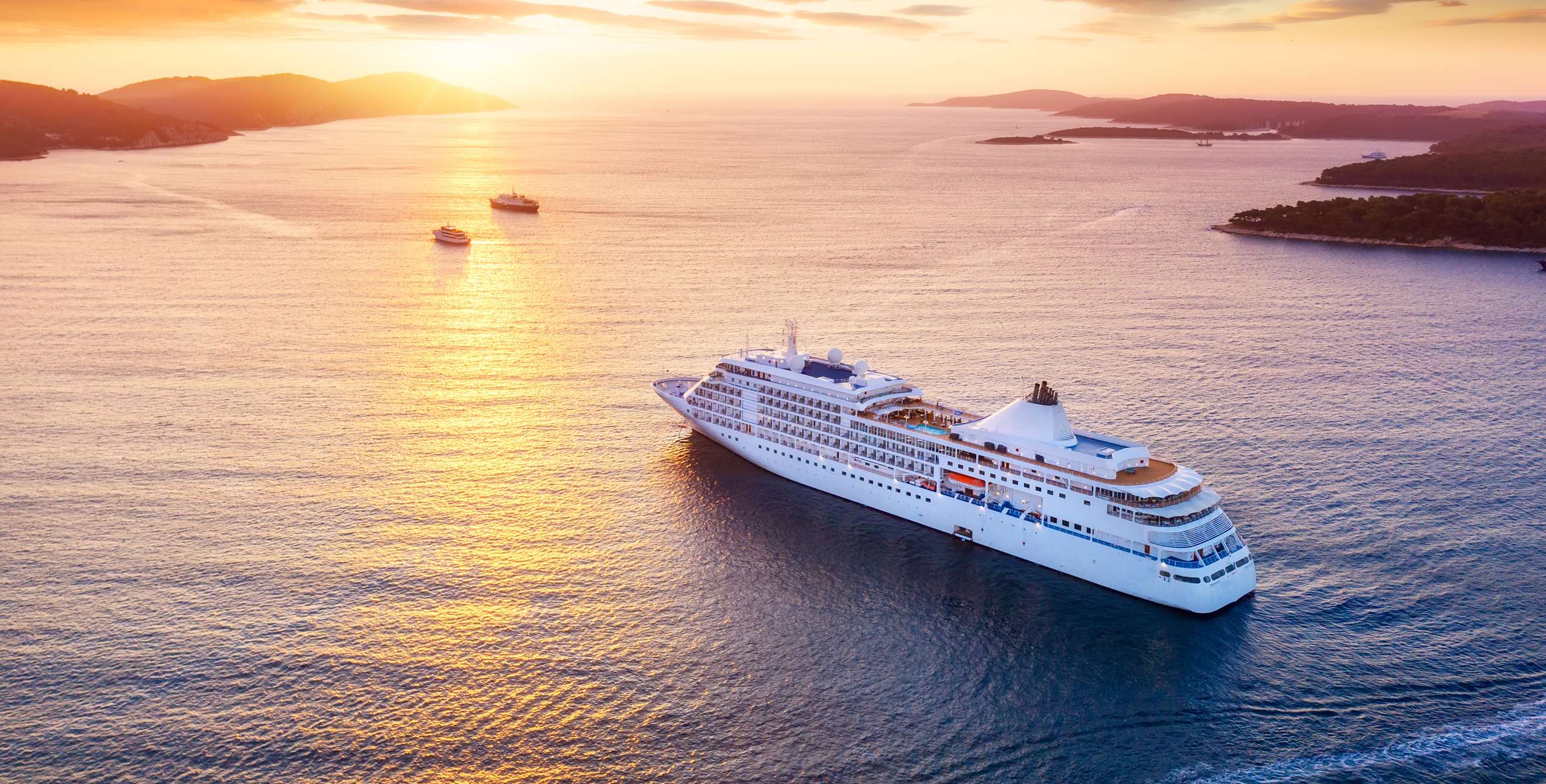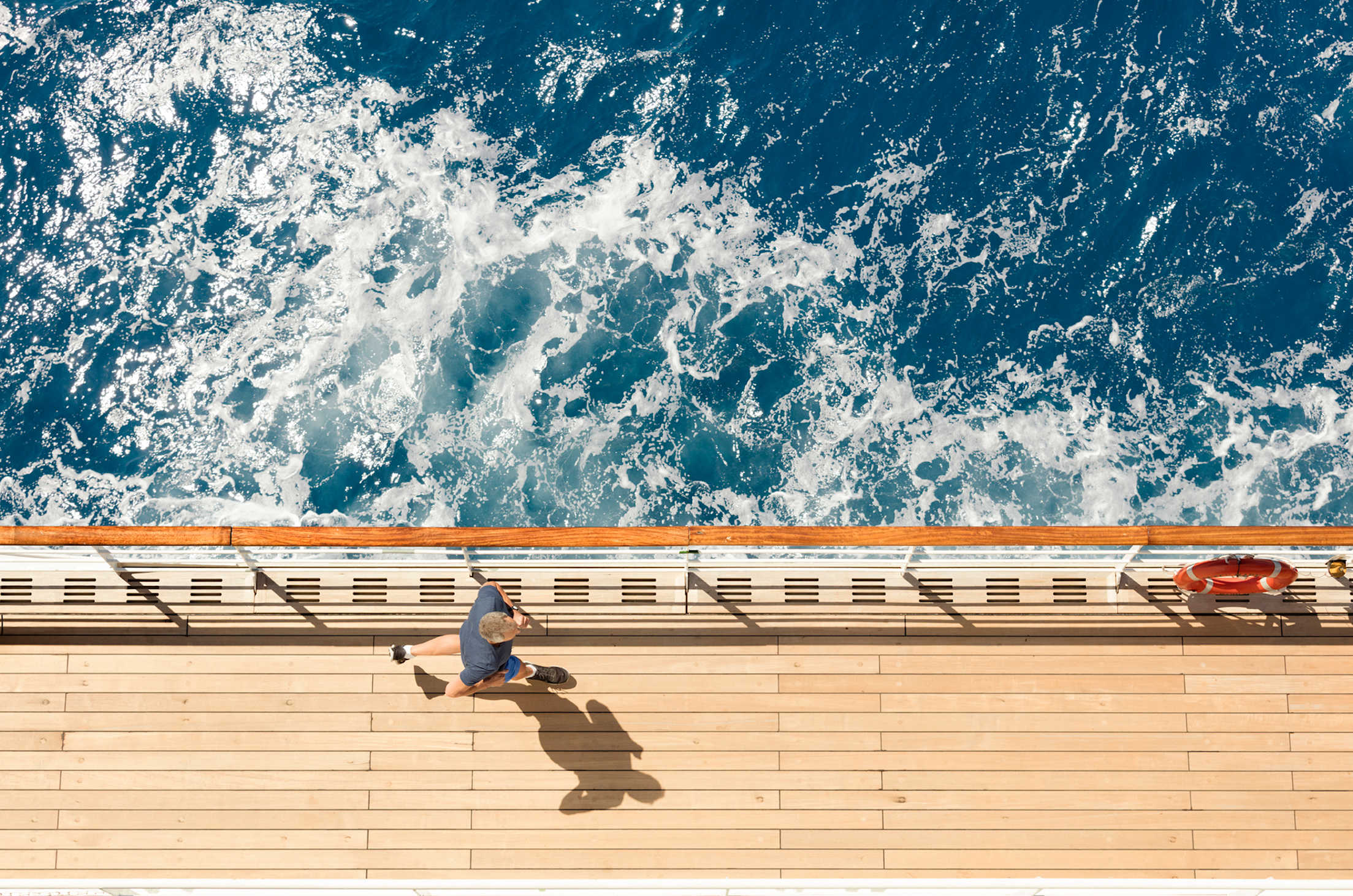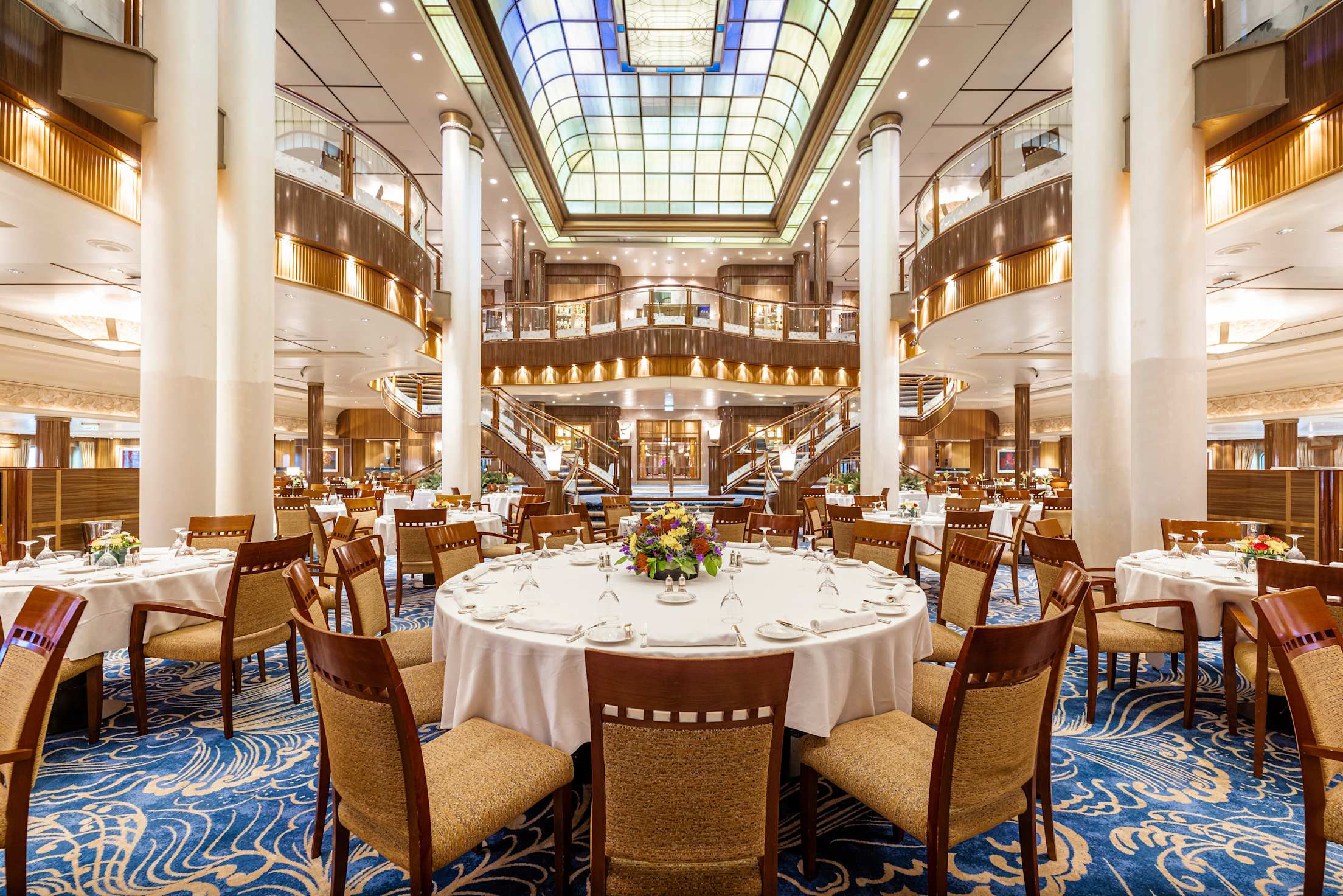
First Cruise? Here’s What You Need to Know
Find out what cabin to book, when to arrive, and more.

Imagine waiting for your overnight flight, excited to board your first-ever cruise the following morning, and hearing the dreaded announcement of a cancellation. That’s just the first of many mistakes I made when taking my first cruise, all of which could have been avoided with some sound advice. So here it is, along with some inside tips that will help make your maiden voyage the first of many.
Give yourself an extra day before embarkation.
Cruise ships may not wait for delayed passengers, so avoid the stress of flight and traffic delays by arriving a day early. Extra sleep will also help you adjust to a time change so you don’t start your long-awaited trip jet-lagged.
Know your costs up-front.
First-time cruisers tend to base decisions on a quoted entry price, but this is by no means what you’ll pay in full. “Many people get caught out by all the extra costs like gratuities, excursions, Wi-Fi, spa access, specialty dining, and alcoholic drinks,” says Andrew Hayward, executive director of Panache Cruises. While some luxury lines may be more inclusive, it’s always best to calculate a trip’s total cost to avoid sticker shock.
De-stress the process by using a specialist.
Booking through a cruise-savvy specialist helps prevent many first-timer mistakes, as they know the drill when it comes to facilities, service options, shore excursions and even details like dinner reservations. They can also help tailor your trip, choosing the right cruise line, ship, and itinerary for your needs.

Consider booking a balcony room.
While slightly more expensive, these rooms are also airier and much more enjoyable for relaxing in your cabin. And if you’re claustrophobic, even a window or porthole help allay the closed-in feeling.
Location, location, location.
Cabins have pros and cons based on their location within the ship. If mobility is a concern, choose one close to an elevator, and if quiet is important to you, make sure you’re away from service and social areas and designated family halls. Conversely, families may prefer rooms close to features such as kids’ clubs or pools. Book early if you need a family cabin or two cabins with interconnecting doors as these sell out quickly. As to room size, if your trip is a longer one or you anticipate spending significant time in your cabin, it may be worth upgrading to a larger suite. If you’re prone to sea-sickness, look for a room mid-ship on a lower floor for the most stability. And don’t forget your Dramamine!
Check your documentation.
You’ll need a passport for most international cruises, and if yours is close to renewal, this can be a problem as some ports of call require that the expiration date be up to six months away.

Plan for wind on deck and changeable weather.
Even if the weather is fine, it can get windy on deck when cruise ships get up to speed. So don’t make the mistake I did and fill your suitcase with sundresses that you’ll spend all your time holding down. Choose hats with chin straps, bring plenty of hair ties, and avoid flappy pants and open-front overshirts that will turn to sails in a breeze. As to weather, it can vary at each stop and it’s not uncommon for storms to come up at sea, so pack accordingly.
Ask about internet access.
Most cruise ships have internet now at additional cost, but not all Wi-Fi is created equal. Ask whether the ship has installed Starlink, a satellite-based system, in which case you should be fine for average needs. But many still rely on older systems that can be slow and iffy. And unless your ship remains entirely in domestic waters, switch to airplane mode as soon as the ship leaves port to avoid international roaming charges.
Plan ahead for shore excursions.
It’s a good idea to research shore-based activities ahead of time, as many fill up quickly. This will also help you pack the right gear. (Don’t forget your mask and snorkel!) If you overlooked this, no worries, just go to the shore excursions desk as soon as possible for the best remaining selection.
Keep up with onboard news.
Download the cruise line’s app, which communicates via its shipboard internet and lists each day’s events. You’ll also likely find a daily program outside your door every morning outlining the day’s activities.

Be assertive about seating arrangements.
Many first-time cruisers get allocated tables with people they don’t know, and while this can be a good way to meet fellow cruisers, it’s also okay if you prefer privacy, Hayward says. “Don’t be afraid or embarrassed to ask the Maître D for your own personal table – you paid for your cruise after all.” And speak up about any special dietary needs, all of which can be accommodated.
Navigate the ship like a pro.
A refillable water bottle comes in handy for availing yourself of water stations. As to masking, it’s a personal choice, but if you notice more crew members suddenly starting to mask, you might want to follow their lead. Lastly, ask an experienced staff member—often those with stars or stripes on their arms—for behind-the-scenes info on the ship’s history and layout—you might even discover shortcuts and lesser-known decks and public spaces.
AAA Travel Agents can help you plan your next cruise, including helping you find the right cruiseline that matches your travel style, shore excursions, and more.